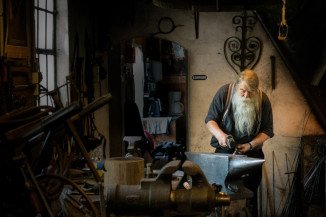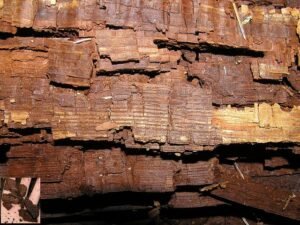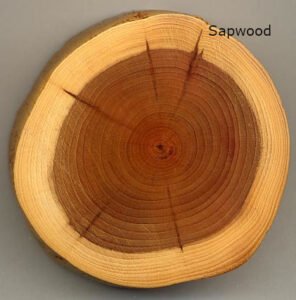The term “Blacksmith” is believed to originated from “black” referring to the black firescale, a layer of oxides that forms on the surface of the metal during heating; and “smith” from either the old English word “smythe” meaning “to strike,” or from the Proto-German “smithaz” meaning “skilled worker.” The art of working with metals predates the start of the iron age, back to the bronze age and other metals worked using fire. In the medieval period, blacksmithing was considered part of the set of seven mechanical arts, and blacksmiths were critical members of their communities. While there were other trades working with metals, the blacksmith had a general knowledge of how to make and repair many things, from the most complex of weapons and armor to simple things like nails or lengths of chain. Until the industrial revolution, a “village smithy” was a staple of every town and produced everything metal for their communities. Today, the traditions of early blacksmiths live on in welding, foundry, and machine shop trades.
One of the important skills of those early Blacksmiths was welding metals together. This course is a prerequisite for the e-VOTECH welding certification programs as defined by the American Welding Association (AWS). By the end of this course the student will gain an appreciation for the impact of metalworking on civilization, and understand the traditions that guide today’s apprenticeship training and certification programs.
Curriculum
- 10 Sections
- 12 Lessons
- 40 Hours
- Course IntroductionOverview of this course and e-VOTECH e-Learning.4
- Origins of Blacksmithing and the Iron AgeDiscovery of Ironworking About 1500 BCE (Before Common Era).1
- The Medieval PeriodBlacksmiths were central to medieval times and formed a critical role in daily village life.1
- The Industrial EraBlacksmithing and the Rise of Automation1
- Modern Era BlacksmithingThe resurgence of Blacksmithing in our present time.1
- Blacksmithing ToolsTime-honored tools of the trade1
- Blacksmithing TechniquesCommon metalworking techniques of the Blacksmith1
- The Blacksmith's WeldThe time-honored principles of joining metals.1
- Course ReviewReview course materials1
- Final Exam1
Forum
Metalworking Trades
A forum for all students pursuing a career in the metalworking trades. If you need help in your classes, this is the place to ask. You are also encouraged to post photos of your class projects here - good or bad.
Join Forum







